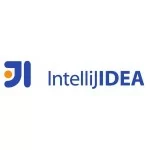Why Micronaut Is the Go-To Framework for Lightweight Microservices
In the evolving landscape of microservices, developers seek frameworks that offer efficiency without compromising performance. Micronaut has emerged as a leading choice for building lightweight microservices, particularly in memory-sensitive environments.
1. Understanding Micronaut’s Lightweight Nature
Micronaut is a modern, JVM-based framework designed from the ground up to address the challenges of microservice architectures. Unlike traditional frameworks that rely heavily on runtime reflection, Micronaut employs ahead-of-time (AOT) compilation. This approach precomputes the necessary metadata at compile time, resulting in significantly reduced startup times and lower memory consumption.
2. Real-World Benefits in Memory-Sensitive Environments
In memory-constrained settings, every megabyte counts. Micronaut’s design ensures that applications can run with a minimal memory footprint. For example, Micronaut applications have been observed to operate with as little as 80MB of memory, making it ideal for environments like IoT devices and serverless platforms.
Example Use Case:
A logistics company adopted Micronaut to manage its IoT tracking devices. The lightweight framework allowed the team to deploy microservices on edge devices with limited computational resources, ensuring real-time data processing without excessive power usage.
3. Comparison: Micronaut vs. Spring Boot vs. Quarkus
Micronaut isn’t the only framework aiming to optimize Java for microservices, but it holds a unique place in memory-sensitive environments. Here’s how it compares with other popular frameworks:
| Feature | Micronaut | Spring Boot 3.0 | Quarkus |
|---|---|---|---|
| Startup Time | Fast (due to AOT compilation) | Moderate (improved with GraalVM) | Very Fast (optimized for GraalVM) |
| Memory Consumption | Low | Higher | Low |
| Dependency Injection | Compile-time | Runtime | Compile-time |
| Reactive Programming | Built-in | Supported | Built-in |
| Kubernetes Integration | Strong | Strong | Exceptional |
| Learning Curve | Moderate | Easy (for Spring ecosystem users) | Steep |
4. Developer Experience and Productivity
Beyond performance, Micronaut enhances developer productivity. Its compile-time dependency injection eliminates the need for runtime proxies, leading to clearer error messages and easier debugging.
Micronaut’s seamless integrations with tools like Kafka, AWS Lambda, and Kubernetes make it a versatile choice for modern microservice architectures. Additionally, its support for reactive programming enables developers to build scalable, low-latency systems.
Example Use Case:
A fintech startup used Micronaut to build a real-time fraud detection service. The framework’s lightweight, reactive programming capabilities helped the team process large amounts of data with minimal latency while maintaining scalability.
5. Learning Resources: A Deep Dive into Micronaut
For those looking to learn more about Micronaut and its potential in building lightweight microservices, the following video provides valuable insights:
6. Conclusion
Micronaut’s innovative approach to building microservices offers tangible benefits in memory-sensitive environments. Its lightweight nature, combined with real-world success stories, underscores its position as a go-to framework for developers aiming to create efficient, scalable, and responsive microservices.
Whether you’re deploying IoT solutions, transitioning to serverless platforms, or simply looking to optimize your microservice architecture, Micronaut provides the tools and performance needed for modern development challenges.



